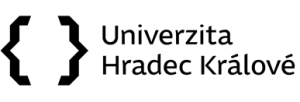Aim of the course is to introduce to students the nature and political role of dissent movements in communist Central Eastern Europe. The course consists of three parts. In the first part, we will focus on different nature of totalitarian/authoritarian communist regimes in the region, which profoundly influenced many aspects of then illegal political groups, movements, and their leaders. Second part will be devoted to an analysis of the dissent movements in the CEE countries themselves, putting stress on the variety of political cultures having impact on dissent. Last part of the course will deal with the role of dissent in the 1989 fall of the communist regimes and their influence upon the first years of political life in the post-communist environment. This course will pay special attention to several rare occasions of uprising against communist rule (1953, 1956, 1968), and also will try to analyse political thought of the most prominent leaders of dissent in the CEE countries (Havel, Michnik, Konrad etc.). Furthermore, the course will focus on the means used by dissent to spread its message to the population (samizdat, illegal broadcasting etc.). In end of the course, we will try to answer the question to what extent the dissent in the CEE influenced the political development there.
- Учитель: Stanislav Myšička
